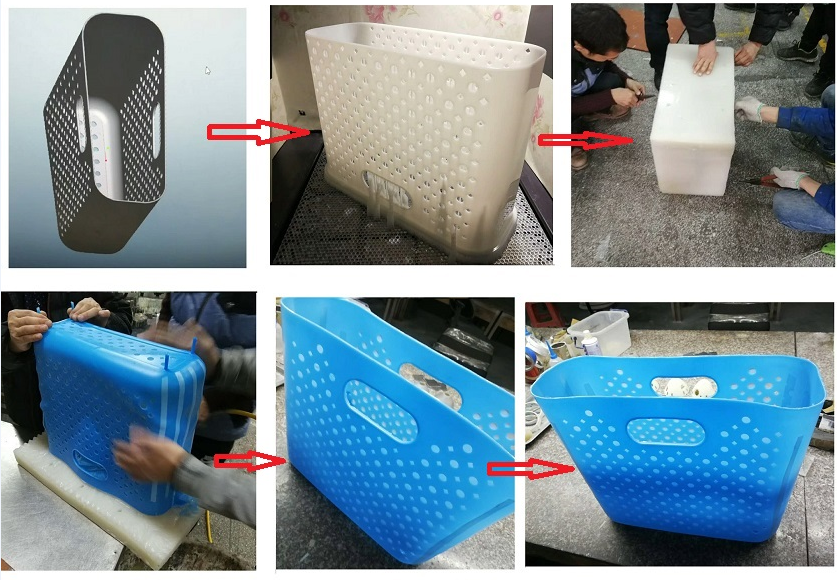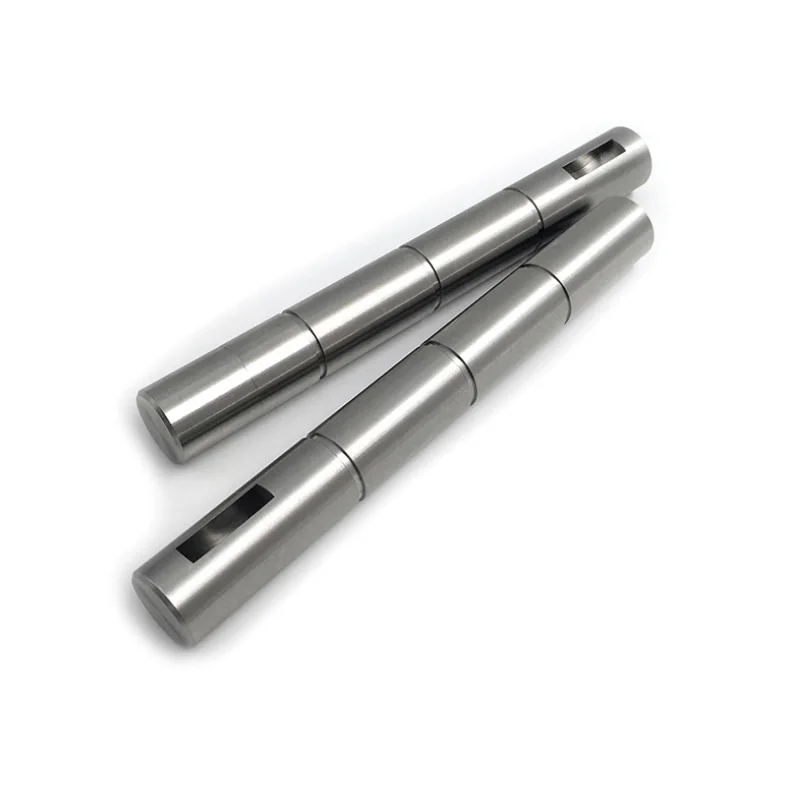Benefits Your Company by RMT vacuum casting services
From prototype to small volume production
Fast delivery in 7 days, even less
- Overview
- Inquiry
- Related Products
Why choose Vacuum Casting?
Vacuum casting is a good method for manufacturing rigid or flexible parts, and is ideal for high-quality prototypes, functional tests, proofs of concepts, and demonstrations. Polyurethane castings can be manufactured from a few to hundreds according to needs. High-quality rapid prototyping and end-use parts can be manufactured in small batches. This makes the vacuum casting model particularly suitable for fit and functional testing, marketing purposes, or a series of limited number of final parts. Vacuum casting is also suitable for various finishing degrees, and we can match the finishing you need for the parts. It is useful in many ways, including for functional testing, engineering testing, product development, as a display model, and marketing activities.
Vacuum casting uses vacuum to suck liquid casting material into the mold. It is very different from injection molding in which a screw is used to push the liquid material into the mold. Since the process is carried out under vacuum, it produces high-quality bubble-free castings with smooth surface texture.
The process starts with a master model, which RMT uses one of its CNC machining centers to create the model.
Then the master model is immersed in liquid silicone, then the silicone is cured to become a mold.
After cut the silicone mold and the remove the master model, the silicone mold is ready for use.
Then casting resin is then poured into the mold, and air bubbles are removed by vacuum, ensuring smooth surface of castings.
After the castings are removed from the silicone mold and cooling down, they are cured in an oven. Silicone mold can be reused about 20 times.
Each casting is an exact copy of the original master model. This is the perfect solution for rapid prototyping and small batch production of high-quality parts.
RMT is fully capable of meeting your vacuum casting and silicone molding needs. With many years of expertise in this field, we can manufacture your plastic or rubber parts according to the highest standards, cost-effective and fast turnaround.
Applications for Vacuum Casting
Pre-launch product testing
Small series of housings and covers
Concept models and prototypes
Advantage of Vacuum Casting for Rapid Prototypes

| 1 Fast turnaround | 4 Superior surface finish |
| RMT can provide up to 20 parts in 7 days, depending on part specification and volume. It saves much time when you meet the project deadline, like getting display models ready for an upcoming trade. | The vacuum process removes air bubbles,detail-oriented. Even though the original product has the most complex geometry, the final product same to the original product, available reproduce of the look, feel and mechanical performance. |
| 2 Affordability and Cost-Effectiveness | 5 Color options |
| Silicone molds are less expensive than injection molding or 3D printing, without making expensive aluminum or steel hard tools and long time mold trial. | Coloring pigments can be added to the resin for a variety of color options. Materials are also available to create parts that are fully opaque, translucent or completely transparent
Finished copies can also be painted, printed, or machined as necessary to improve appearance and function. |
| 3 Capable of producing large or complex parts | 6 High Quality |
| Vacuum casting can to copy very large and complex parts. urethanes of different types can be overmolded to create various surface textures and hardnesses in one unit. |
The products made using the vacuum casting method are of high quality,easily reproducing even very fine surface details from the original. . Also, you can choose the right materials of flexibility, hardness and rigidity you want to be used |
Vacuum Casting Material
We provide a wide range of 26 polyurethanes (PU) material from Hei-Cast company, Axson and BJB company, similar to rubber, PP, PE, POM, ABS and PC. These materials offer a variety of outstanding properties and the possibility of casting transparent and matching colors of components. If you are looking for a specific finishing of texture, plating, painting, our skilled post-production team will meet your requirements.

Vacuum casting polyurethane materials
| Material | Supplier | Material Simulation | Strength Shore |
Flexion (MPA) |
TC Max | Native color | Advantage | Shrinkage |
| ABS-Like | ||||||||
| PU8150 | Hei-CAST | ABS | Shore 83D | 1790 | 85 | Amber,white and black | Good resistance | 1 |
| UP4280 | Axson | ABS | Shore 81D | 2200 | 93 | Dark Amber | Good resistance | 1 |
| PP-Like | ||||||||
| UP5690 | Axson | PP | Shore 75-83 D | 600–1300 | 70 | White/Black | Good resistance | 1 |
| Rubber/silicone like | ||||||||
| PU8400 | Hei-CAST | Elastomer | 20-90shA | / | / | Milky white/Black | Good Bend | 1 |
| T0387 | Hei-CAST | Elastomer | 30-90shA | / | / | Clear | Good Bend | 1 |
| High temperature | ||||||||
| PX 527 | Hei-CAST | PC | Shore 85D | 2254 | 105 | White/Black | High T℃ 105° | 1 |
| PX223HT | Hei-CAST | PS/ABS | Shore 85D | 2300 | 120 | Black | IdealTG 120° | 1 |
| Frame resistant UL-VO | ||||||||
| PU8263 | Hei-CAST | ABS | Shore 85D | 1800 | 85 | White | 94V0 flame retarding | 1 |
| PX330 | Axson | Loaded ABS | Shore 87D | 3300 | 100 | Off White | V 0 far 25 | 1 |
| Transparent Clear | ||||||||
| PX522HT | Axson | PMMA | Shore 87D | 2100 | 100 | Clear | Coloration TG100° | 0.996 |
| PX521HT | Axson | PMMA | Shore 87D | 2200 | 100 | Clear | Coloration TG100° | 0.996 |
Vacuum Casting Technical Specifications
| Lead time | Up to 20 castings within 5 working days | |
| Accuracy | Usually ±0.3% (with a lower limit on ± 0.3 mm on dimensions smaller than 100 mm) | |
| Minimum wall thickness | To make sure the silicone mold work properly, a wall thickness of at least 1.0 mm is necessary. | |
| Maximum part dimension | The size of the mold is limited by the dimensions of the vacuum chamber (2100 x 1000 x 850 mm), and by the volume of the product (maximum volume: 10 liters) |
|
| Typical quantities | 15 to 25 copies per mold (depending on the mold’s complexity and the casting materials) | |
| Color and finishing | Pigment is added to the liquid polyurethane before casting. Custom painting, texture high-quality surface finish comparable to injection molding |
|

How Does Vacuum Casting Work?

| Step 1:Build A High-Quality Master pattern | Master patterns are 3D prototype of your CAD designs from durable and solid prototype. They are commonly made by CNC machining or 3D Printing. Because these methods are fast, don’t require separate tooling and can easily be modified to accommodate design changes as needed. This preparation usually involves sanding, polishing and painting to get the surface finish correct. For multiple parts that might fit together into an assembly, we also test fit the pieces and apply minor adjustments to ensure clean, tight appearance. After finish and inspect the masters, we will move to silicone mold making. |
|
| Step 2: Make Silicone Mold | After the patterns are ready they are placed in a casting box that is then filled with liquid silicone. After fully curing in an oven for 16 hours, the silicone is solidified and the casting box can be taken apart.
This mold is open by cutting along a predetermined parting line and then master pattern is removed. This reveal an hollow cavity at the center, which has the exact dimeisions of mirror master pattern. |
|
| Step 3: Vacuumize the mold | After the mold is cut into two, it is placed in the vacuum chamber. Then, the mold is filled with the designated resin material. You should fill the mold with the designated material. The resin material is usually mixed with metallic powder or any color pigment to achieve aesthetic or specific functional properties. It is placed in the vacuum chamber to ensure that there are no air bubbles in the mold, and ensure that the final product qualified. |
|
| Step 4: Make the parts | Pour the casting resins into the empty cavity to create a highly accurate copy of the original. It can also overmold two or more materials.
The mold with resin inside is placed in the oven, and cured in high temperatures to ensure that the material is strong and durable. Then remove prototype off silicone mold, it can be used in making more copies. |
|
Applications of Vacuum casting
We help mechanical engineers create prototypes or final productionfor application in various industries : aerospace, automotive, defense, electronics, industrial automation, machinery, medical devices, commercial products, househould products, oil & gas and robotics.
Contact RMT now if you have any parts need to be made by Silicone molding technology.
Send us CAD file for instant quote.

 EN
EN
 AR
AR
 BG
BG
 HR
HR
 CS
CS
 DA
DA
 NL
NL
 FI
FI
 FR
FR
 DE
DE
 EL
EL
 IT
IT
 JA
JA
 KO
KO
 NO
NO
 PL
PL
 PT
PT
 RO
RO
 RU
RU
 ES
ES
 SV
SV
 IW
IW
 LV
LV
 SR
SR
 SK
SK
 UK
UK
 GL
GL
 HU
HU
 TH
TH
 TR
TR
 FA
FA
 GA
GA
 CY
CY
 EU
EU
 BN
BN
 BS
BS
 LA
LA
 NE
NE
 SO
SO
 KK
KK











